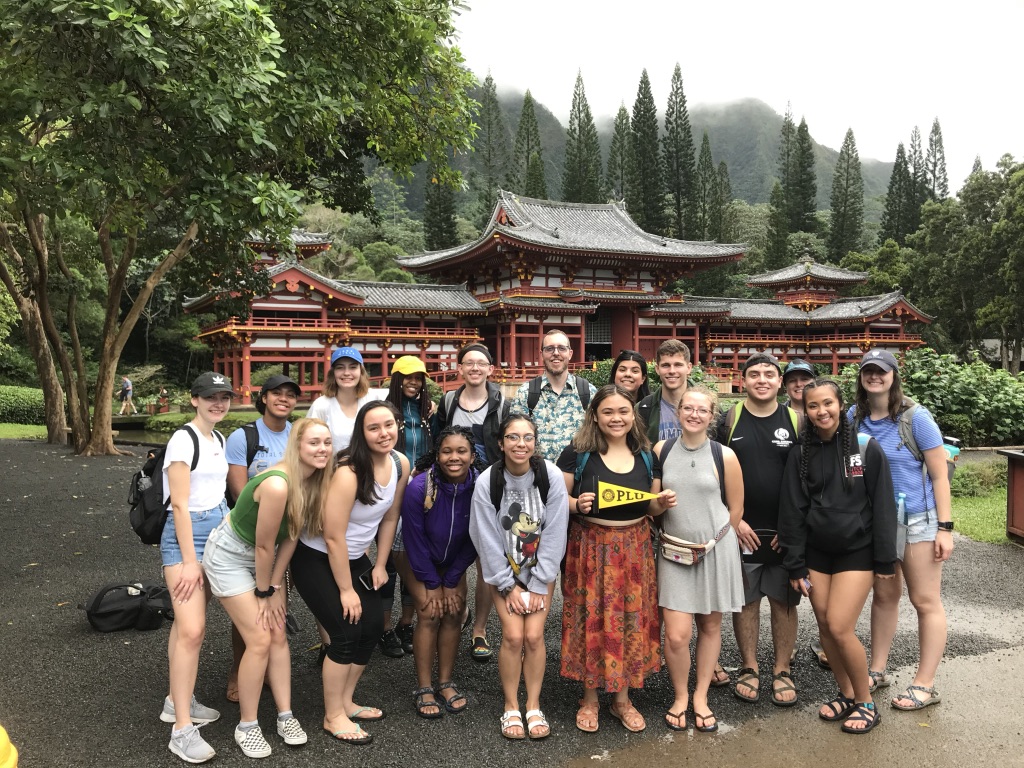Page 414 • (12,610 results in 0.069 seconds)
-
What To Do Before, During, and After an Earthquake (FEMA) (pdf) view download
-
PLU Vision for Global EducationEducating to achieve a just, healthy, sustainable and peaceful world, both locally and globally. (2003 Strategic Plan for Global Education)The Mission of the Wang Center for Global and Community Engaged EducationWorking collaboratively with academic units and disciplines of Pacific Lutheran University, the Wang Center is dedicated to supporting faculty, students and staff with the resources necessary to advance PLU’s distinction and vision for global education of
-
animal. One of the most beautiful animals in the world, the jaguar is the third largest of all the cats, behind only the tiger and the lion. Endangered throughout its range in Latin America, the jaguar remains the least studied of all the major felids. Using radio collars, biologists can study—and work to save—this elusive animal, using the signals from the transmitter to gather data on range, habitat needs, and behavior. Professor of English Emeritus Charles Bergman with an Imperial Parrot As we
-
Symposiumnoun : a conference or meeting to discuss a particular subject From the Greek symp-po-sium : a drinking party or convivial discussion, especially as held in ancient Greece after a banquetWhy a Symposium?The biennial international symposium at Pacific Lutheran University is one of the ways that the Wang Center supports the university’s goal of being an ever more globally focused university. PLU is nationally recognized for its international study away experiences that immerse students
-

lens of PLU’s faith community. “The PLU student body is about 15 percent Lutheran, which means we have a diversity of faith traditions and perspectives on campus,” Rude said. So in the podcast’s inaugural episode, Rude and two non-Lutheran PLU graduates, Matthew Salzano ’18 and Alaa Alshaibani ’17, discuss faith formation, spiritual journeys and what a Lutheran higher education experience looks like from a different faith tradition. In its second episode, the podcast examines what teaching in the
-

of Kinesiology and co-sponsored by the Center for Gender Equity, Title IX Coordinator, and the Dean of Inclusive Excellence. This series, now in its fourth year, brings experts from across the country to PLU to address contemporary cultural issues occurring in sport and exercise settings. “As a field that prepares coaches, educators and other youth sport leaders — it is imperative that we engage in difficult conversations and address the most challenging and pressing issues we face as a society
-
PLU Wind Ensemble: Musica Ignota Posted by: vcraker / November 18, 2021 November 18, 2021 The PLU Wind Ensemble performed the world premiere of Ingrid Stolzel’s “Musica Ignota” on October 9, 2021. Stolzel traveled to PLU to attend the premiere and work with the PLU wind ensemble and Professor of Music Edwin Powell in advance. A composition almost 1,000 years in the making, “Musica Ignota” is based on the 11th-century Medieval composer/mystic Hildegard von Bingen. It is profound for many reasons
-
Lutheran immigrants from Norway and has, over its history, welcomed mostly white and Christian persons into this learning community: the story of PLU is one largely shaped by people of European descent. Using critical race theory, this presentation and discussion will consider the dominant narrative of Lutheran education and ask how counter narratives that might recast or reconstruct the PLU story in ways previously unimagined. 5:00 – 6:45 p.m. – Conference Reception and Dinner – Regency Room
-

lead the course during its past two iterations. When they are not waist-deep in Hawaiʻian tradition, Dr. Hammerstrom and his students take advantage of the diverse breadth of religions and traditions represented in Honolulu, including Buddhism, Daoism, Shintō, Confucianism, folk religion, and Christianity. From visiting churches and temples to Zen meditation workshops, students witness and participate in the ordinary, everyday activities that uphold and honor the traditions of these religions
-
costumes and dancing, or hear the music, and audience participation that all would typically be part of a mask’s appearance in a community or a sacrifice to a figure in a shrine. Nevertheless, you can still appreciate the object and the skill of the artist who fashioned it, often from a single piece of wood or using a combination of materials, but standing alone a piece of African art cannot give you a sense of its fuller meaning and especially the spiritual importance of some pieces. This presents a
Do you have any feedback for us? If so, feel free to use our Feedback Form.


